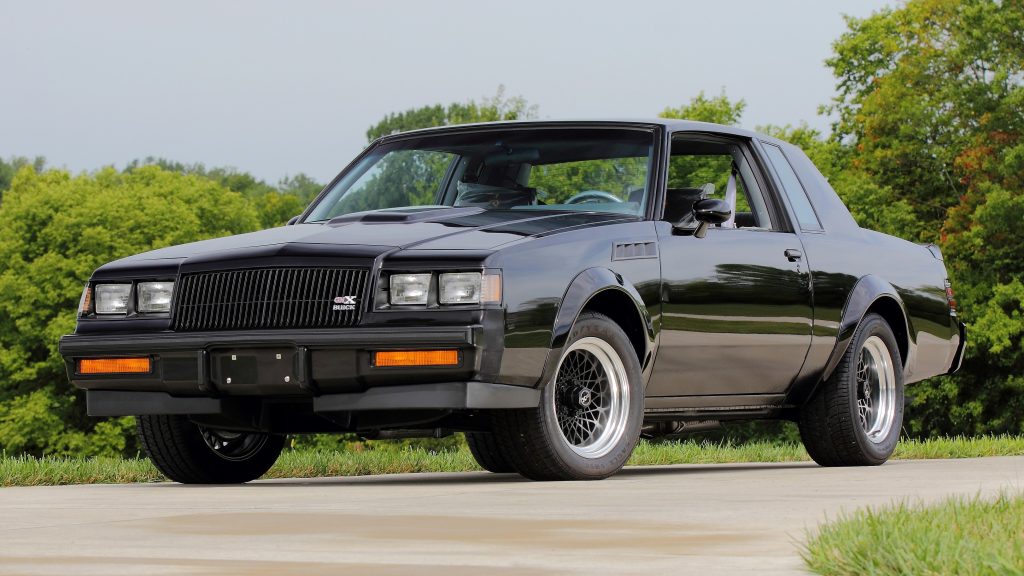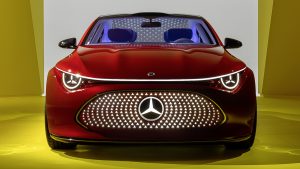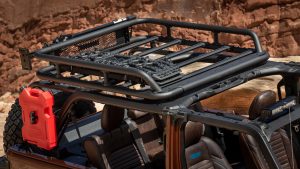Two generations of the Porsche 911 had an exclusive edition that fans nicknamed “flat nose”. There will be an auction with one car of each this December. Let’s check them out!
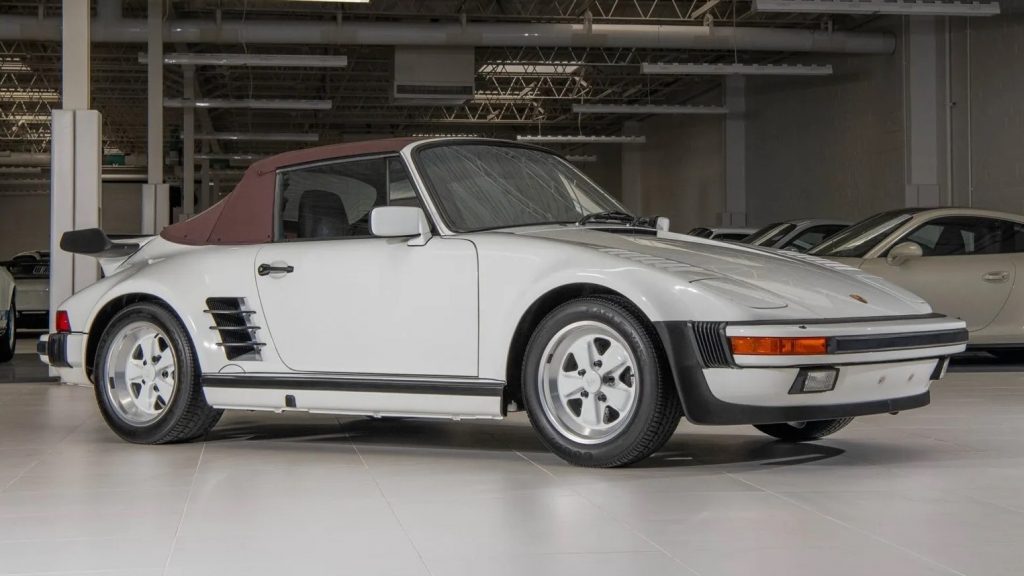
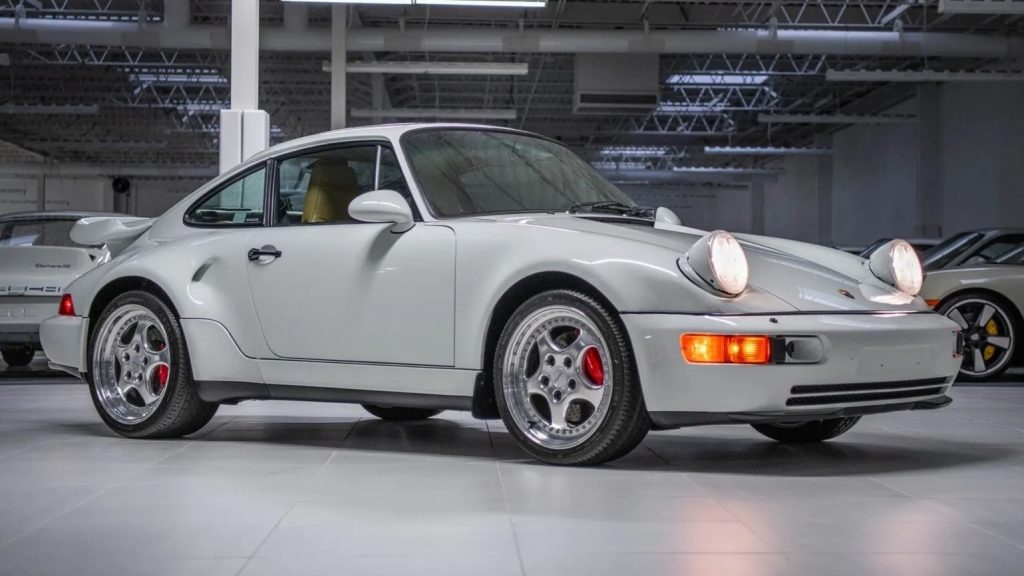
- In December, there will be a huge collection of Porsche cars on auction
- Two of them are highly special editions: Porsche 930 and 964 Flachbau
- Here, we’re going to explain everything about those iconic 911 models
Special editions became a staple of automotive marketing. Companies use them to honor local events, to celebrate their own milestones and, at times, to simply attract attention to the car and boost its sales.
Most of them, however, limit themselves to offering more standard items and adding a few visual tweaks. The automaker’s taste in balancing those two can make that car great or terrible at reselling years later.
Having that in mind, it is easy to understand that, whenever a truly special edition comes up, it earns total attention. Journalists rave about it and buyers rush to the dealers to get their unit before they run out.
The Flachbau was a good example of the latter for the 911. Porsche recreated one of its signature design traits in a way to boost its performance. However, it also ended up creating yet another collector’s item.
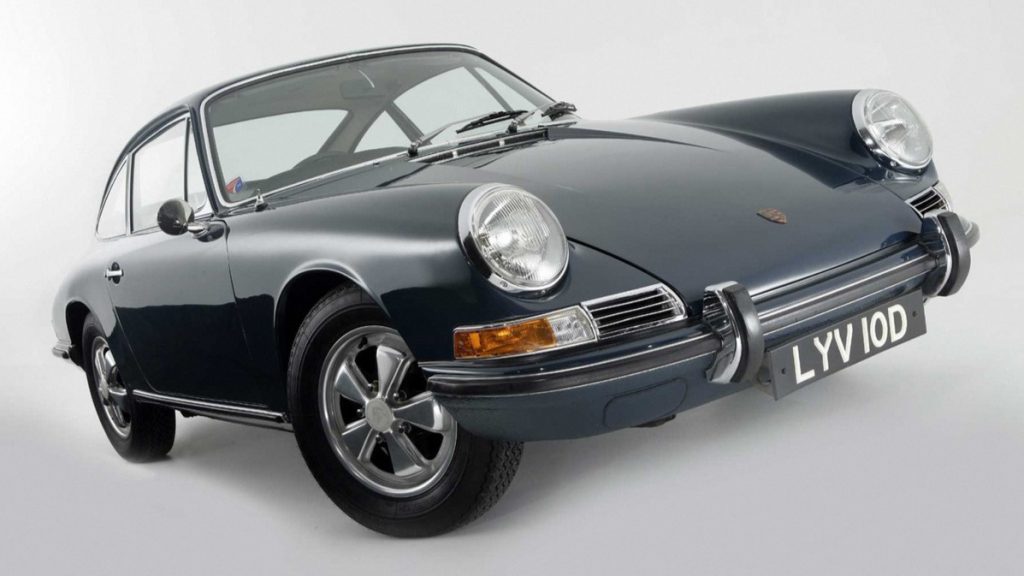
Catching up with the Porsche 911
If you are a car fan, you surely know the basics. The Porsche 911 first arrived in 1964 to replace the 356. It was larger, more comfortable and more powerful, but kept using an air-cooled boxer engine on the rear.
We can say that manufacturer and product helped one another over the years. The car would slowly make Porsche competitive in the global sports car market, but only because it continuously received upgrades.
Now, it is important to know that Porsche was rather small back then. It had to offer other car models to stay profitable, but that meant jumping through many hoops to make good use of its limited resources.
One of those was keeping the 911 in the same project for 25 years. It would get its first major upgrade in 1989, the 964 series. However, that was not entirely a negative thing. The Flachbau is there to prove it.
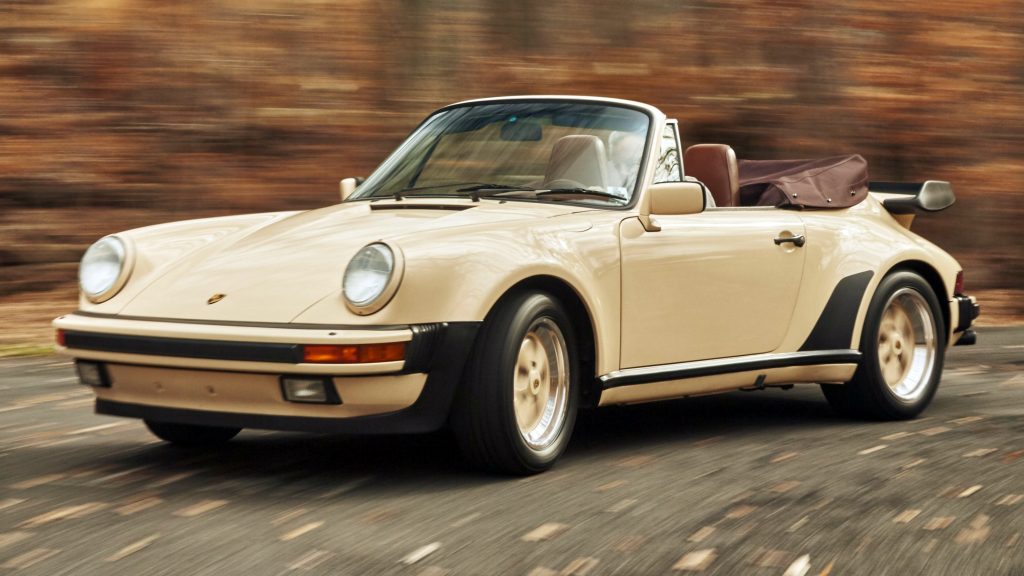
It all began with the 911 Turbo
One of the reasons why the Flachbau is so special is that it was born from another special edition. The 911 Turbo first appeared as a homologation special that would allow Porsche to race in FIA’s groups 4 and 5.
As I explain in this article, that purpose meant the company had to build a given number of cars for street use. However, the Turbo had such a positive reception that Porsche decided to make it a regular version.
Codenamed Porsche 930, its notable additions were a 3.0L engine, a large ducktail rear spoiler, and wider tracks with flared wheel arches. And there were many other tweaks to deal with the higher performance.
Porsche would use the same strategy of gradual improvement as with the regular 911. Larger rear spoiler to reduce oversteer, better brakes and bigger engine came over the following years, but there was more.
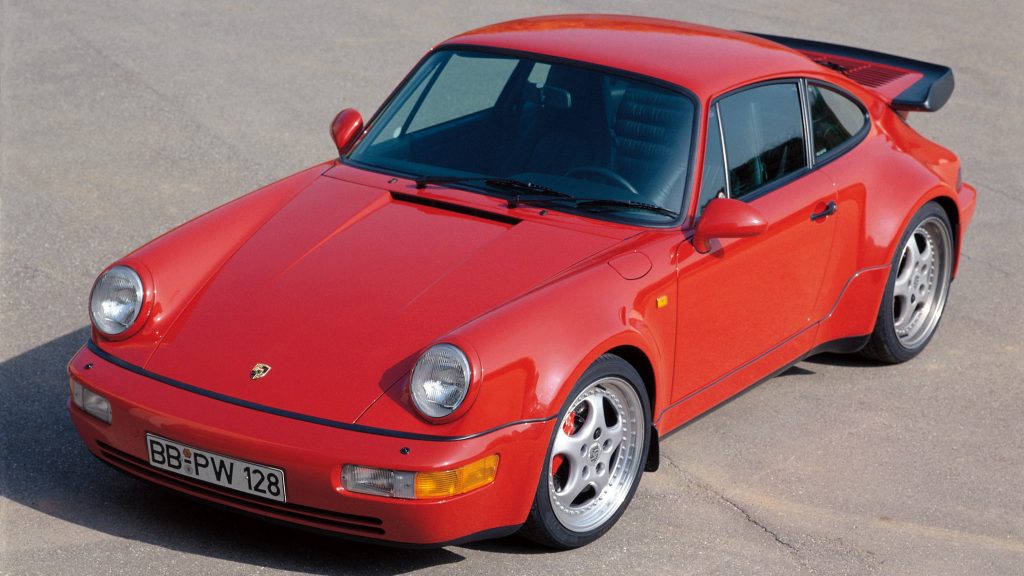
Flachbau: from racing to the streets
The Porsche 930 had two racing variations, the 934 and the 935. The latter turned out to be so successful that fans wanted to see its design on the streets. At first, Kremer Racing created a conversion kit in 1981.
Porsche would only involve itself in 1982, when it received a commission to produce a street-legal version of the 935. The initiative had such positive feedback that it became a reality in 1986 as the 930 Flachbau.
This variety was available through the maker’s special-order program. It consisted of adopting fenders of much smoother design up front and replacing the vertical headlights with pop-up ones under covers.
Except for trim changes on the sides, the 930 “flat nose” was essentially the same car. The new design was clearly more aerodynamic, which favored its performance, but came at a high price. 948 units were built.
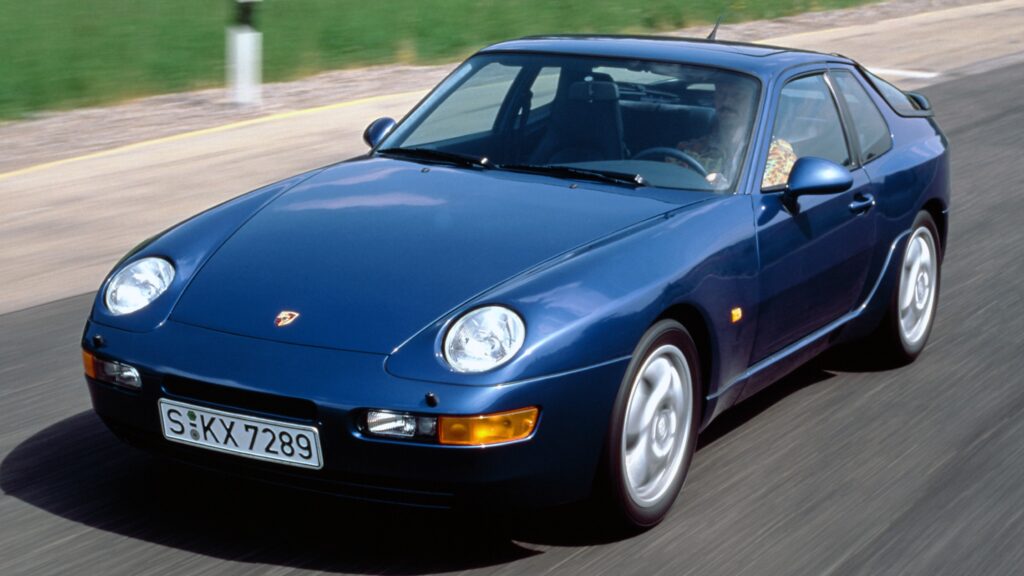
New chance with the Porsche 964
In 1989, the 964 series brought a major revision to the 911’s project. While it kept the air-cooled, flat-six engine, it brought ABS, all-wheel drive, power steering, and the Tiptronic transmission for the first time.
To that, one can add bumpers and fog lights flush with the body, an electric rear spoiler that lifts at high speeds, new climate control, and standard dual airbags. 85% of it was new compared to its predecessor.
While that is a lot, the truth is that it was only bringing the car up to date with its rivals. The Porsche 964 also had race-inspired versions, like the Carrera RS and the Cup, but it would need more to stand out.
The 964 Turbo kept the 930’s 3.3L engine at first. During that time, it also spawned the Leichtbau version, which dropped several comfort items to reach a lower weight. But the 964 still had potential for more.
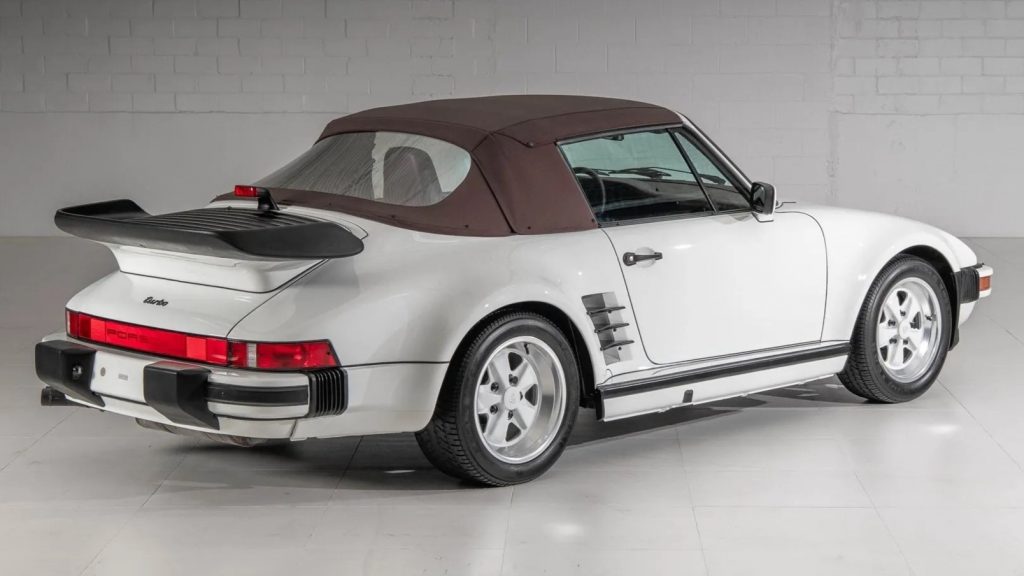
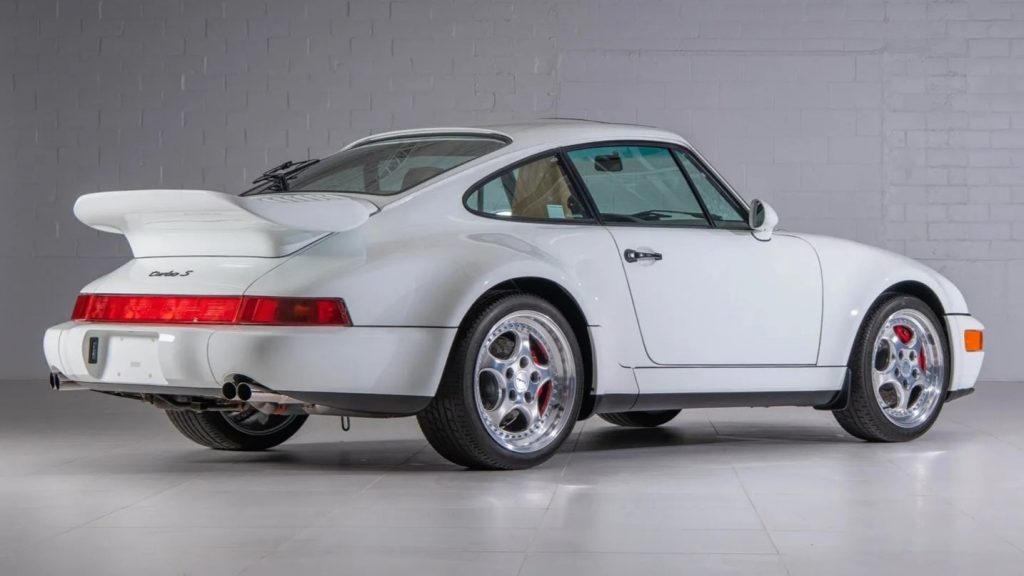
Porsche 964 Turbo S Flachbau
The Turbo 3.6 arrived in 1993, right in the final years of the car’s production. The Porsche 964 would get a new widebody kit and a larger engine. It was only built until 1994, which ended making it highly coveted.
Once the 964’s production ended, in that same year, Porsche still had some Turbo chassis. It sent them to its Exclusiv division, which used them to build the “Turbo S”. So yes, a special version of a special version.
Now, did you think that Porsche would stop there? Not at all. The 964 Turbo S brought back the Flachbau design. This time, it used circular headlights that swivel to a vertical position when in use, like in the 968.
Oddly enough, the Japanese version retained the 930’s trim: covered headlights, front wings behind them, and side air intakes with horizontal slats. The flat nose made the Porsche 964 reach 280 km/h (174 mph).
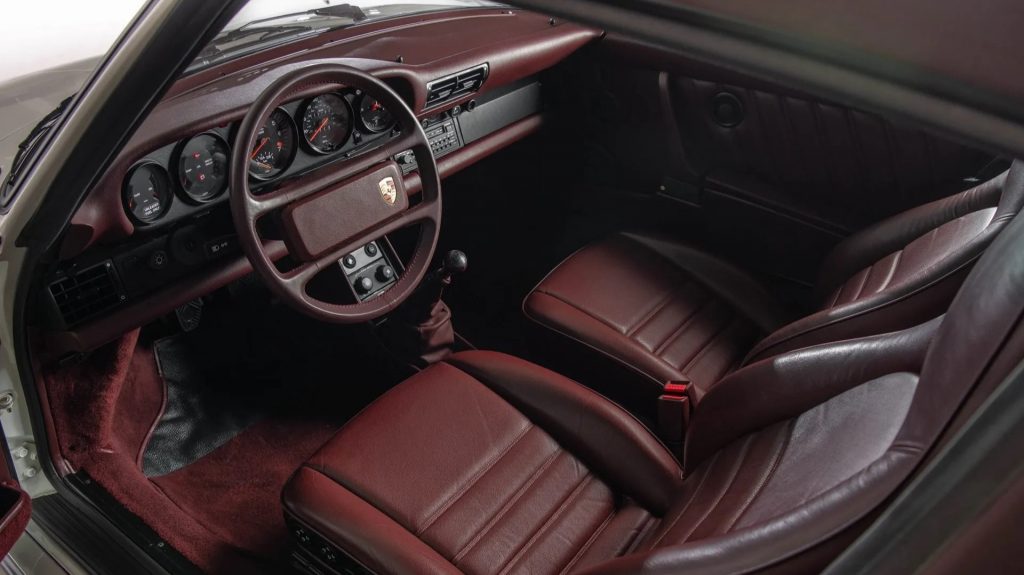
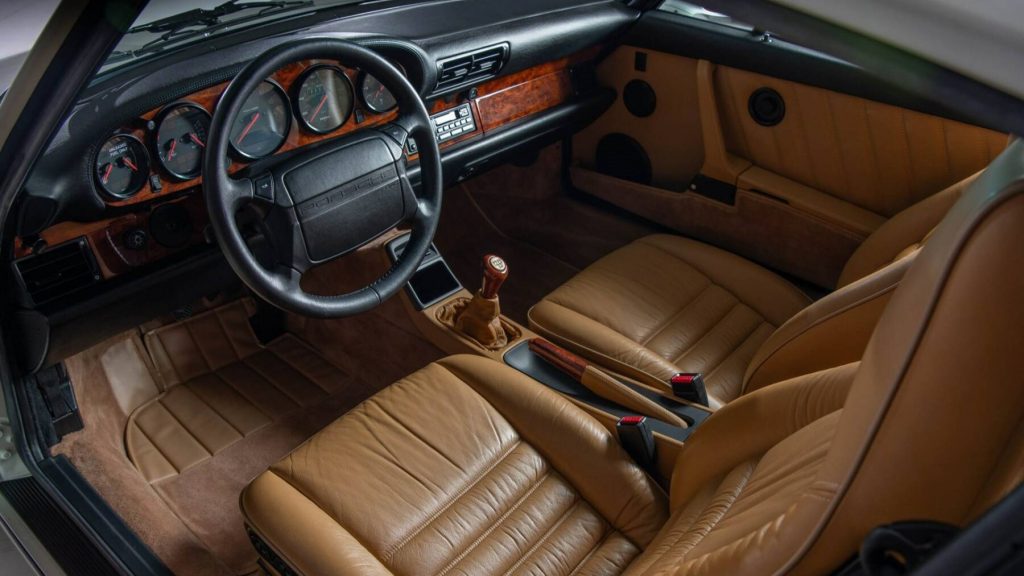
Porsche Flachbau for sale
If you like the slant nose design, whether in the 930 or the 964, you are in luck. RM Sotheby’s is going to auction a whole collection of Porsche vehicles and memorabilia, and there are two Flachbau models in it.
The team is still collecting the 930‘s details, but the photos anticipate that it is a Cabriolet version. When it comes to the Porsche 964 Flauchbau for sale, the allure begins on its odometer: it shows only 39 miles.
Cabin-wise, the 930 Cabriolet comes in burgundy while the 964 features Cashmere beige. Both were top-tier versions, so they come with full equipment lists. The 964 includes heated seats and a power sunroof.
The 964 flat nose is particularly special because, among the 39 US-spec units, it is one of two painted in Grand Prix white. It also comes with owner’s books and pouch, window sticker, and document binder.

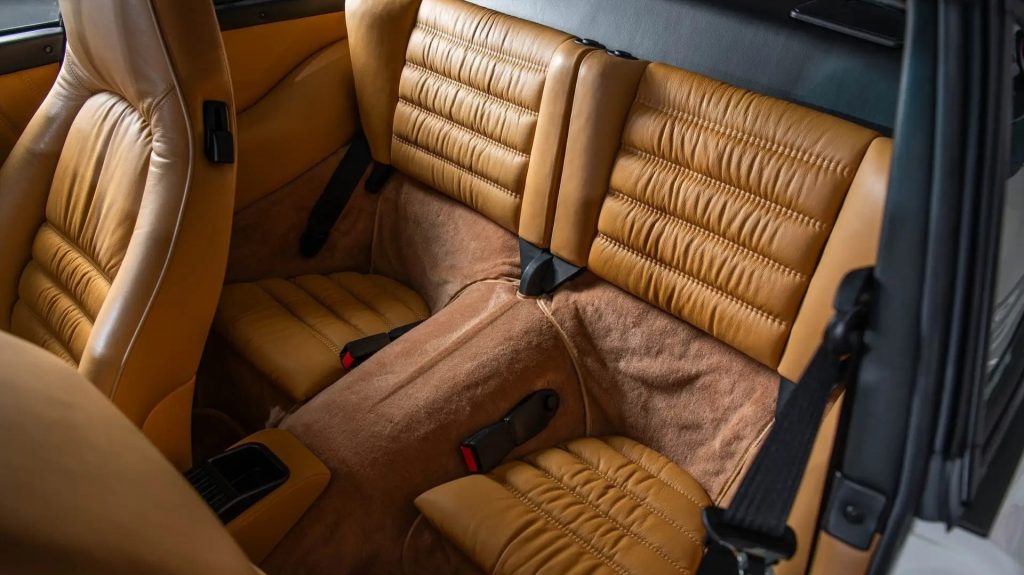
Car fans usually praise the flat nose Porsche 911, whether in the 930 or the 964 generation. Not only are they unique in many ways, but also, they were produced in very few units. Both became highly coveted.
Now that you know all about them, you will be able to enjoy that auction much more and enjoy any other ones that may happen in the next years. Which generation of the Porsche 911 Flachbau is your favorite?
You may also like
While the Porsche 911 Flachbau became special for its front design, the Buick GNX had unique powertrain. The North American model renewed the brand’s image in 1987 and became a modern classic.
Danillo Almeida has explored his passion for cars in two distinct ways. The first one is his graduation course in Mechanical Engineering, which will hopefully lead to a job position in the field. The other one is expressing his knowledge and opinions on the matter through writing. Almeida has already contributed to blogs, stores, and websites in general writing automotive content in many formats.

